ANATOMY OF A FILM SCENE
In this article, I thought I would write about a movie scene that particularly impresses me. The one I have in mind is the transformation sequence from ‘An American Werewolf In London’, directed by John Landis.
If you want to know why this scene should be selected, just compare it the transformation sequences that came before. There had been several werewolf movies released before ‘American’ came out, and each one had to tackle the problem of how to depict a person transforming into a monster. In films like ‘The Wolf-man’, the actor would have to sit motionless in a chair. Then, between takes, the make-up artist (which, in this case, was Jack Pierce of ‘Frankenstein’ fame) would apply a little more werewolf makeup, gluing clumps of yak hair to Lon Chaney Junior’s face. The whole gag took five hours to complete, and what the viewer sees is the protagonist becoming more hirsuit and bestial as one take dissolves into the next.
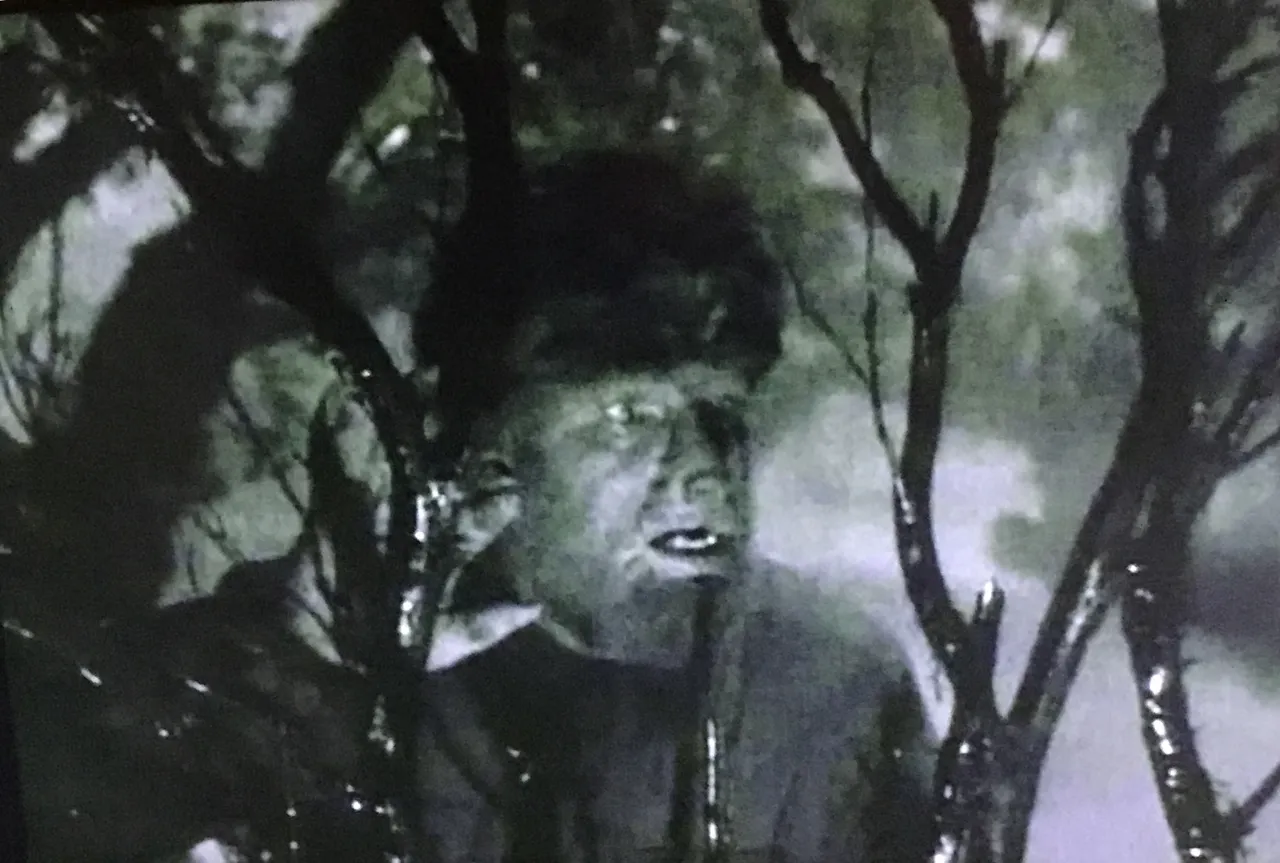
The trouble with this method was that it did not allow for much expression on the actor’s part. The very nature of dissolves meant that the actor had to try and remain motionless, as any movement would have betrayed the technique to the audience. The fact that a main character in a werewolf movie remained calmly sat while undergoing such a transformation bothered ‘American’ director John Landis. If your body was being changed into some monstrous form before your very eyes, surely you would not remain so calm throughout? When it came to his transformation scene, the sequence would feature panic and terror.
The sequence begins where most werewolf transformation scenes do, with the actor sat in a chair. But, as the full moon emerges from behind a bank of clouds, he leaps out of the chair as if suddenly stricken with great pain. “Jesus Christ, I’m burning!’, he screams, tearing off his clothes in a demented manner. And then he stares with manic, bulging eyes at his own hand, bellowing with fear and pain as it begins to stretch and distort and change into a paw.
This is the beginning of an Oscar-winning sequence by effects maestro, Rick Baker. The sequence was particularly challenging because, unlike with most horror films, this one does not take place amidst the cloak of darkness with deep shadows to conveniently hide things from the audience’s eyes. No, it all takes place amidst bright home lighting, as the protagonist transforms in his girlfriend’s living room.
What you are actually looking at in this stage of the transformation is a fake hand, inside of which are syringes with the plunger in, and a plastic tube going to another syringe with the plunger out. This set-up is a basic pneumatic ram, and when the plunger is pushed in, it forces the other out, thereby stretching the fingers. There are actually several hands featured in this sequence, sculpted to look increasingly monstrous, and we cut between them and the protagonist’s terrified reactions.
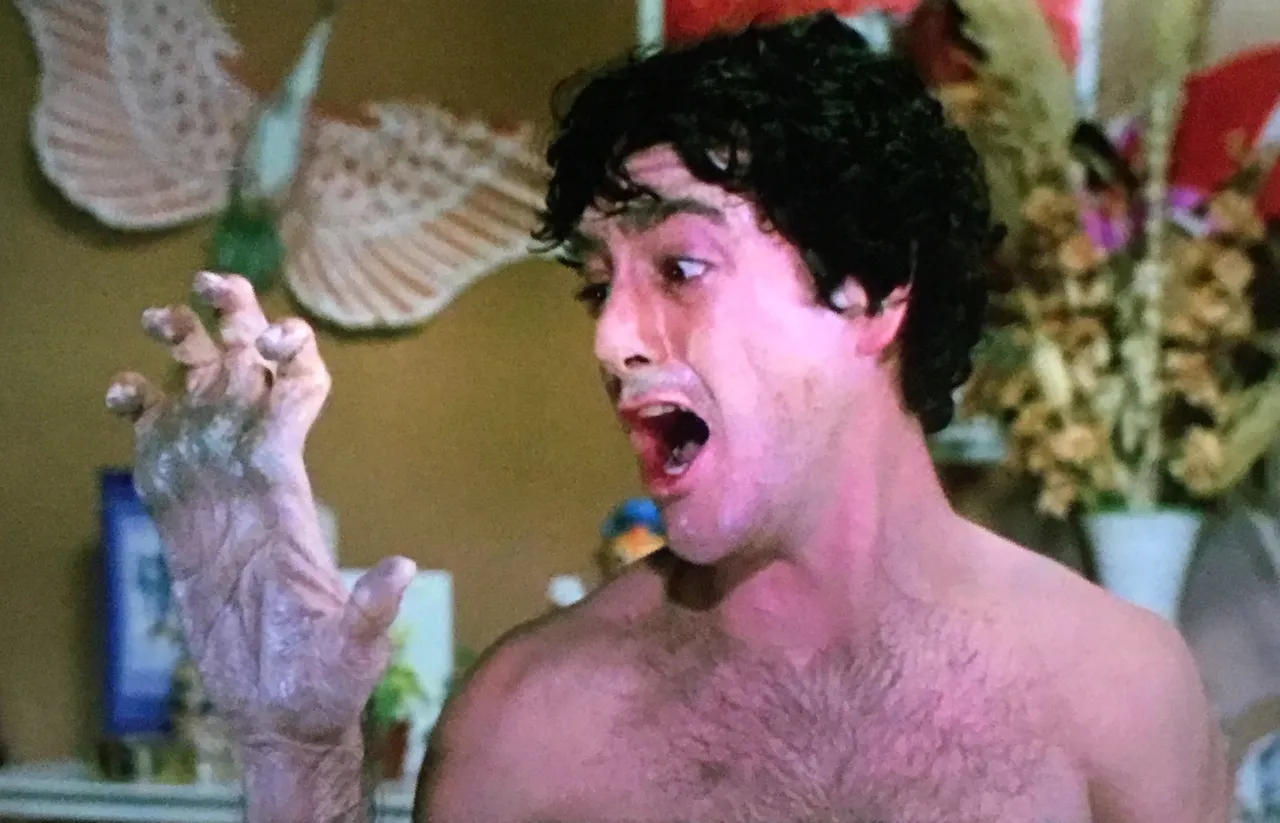
The protagonist falls to his knees and ends up on all fours, his face contorted with agony as his skeleton is forced into that of a four-legged beast. The transforming feet were accomplished in much the same way as the hands, with casts taken of the actor’s feet and the same simple pneumatic system used to achieve the practical effect of their transforming into paws.
The effect of his spine and shoulders transforming was achieved via a bespoke practical effect that the team christened ‘Change-O-Back’. This was a model of the actor’s torso, inside of which were balloons at appropriate places that could be inflated by air fed into them by tubes.
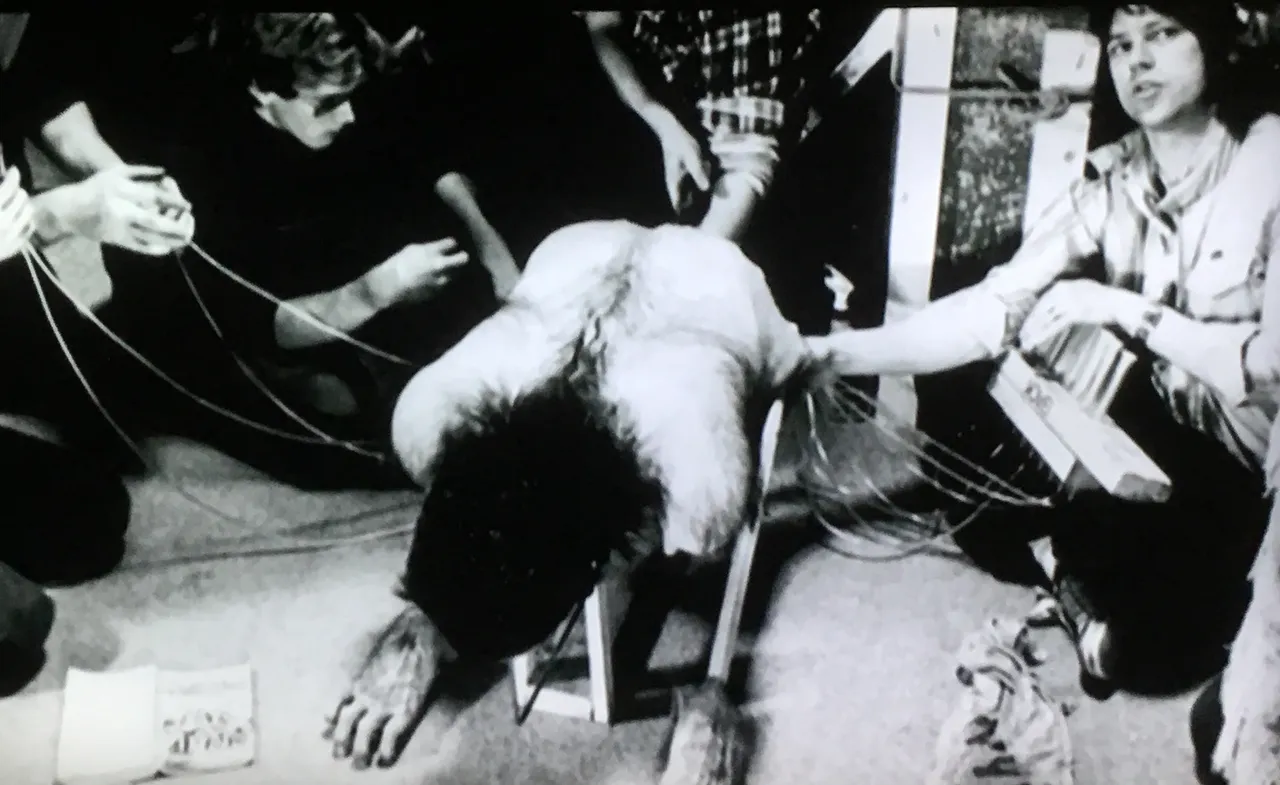
The protagonist rolls over onto his back, and now his terrified shouts become more terrifying, as his humanity is increasingly taken over by the blood-lust of the werewolf. The body you see is not the actors. He is actually in a hole, with only his head and arms (heavily made-up) in view. The set was raised up in order for puppeteers to be able to work beneath it, manipulating rods to puppeteer a fake body that had been engineered by effects supervisor Tom Heston.
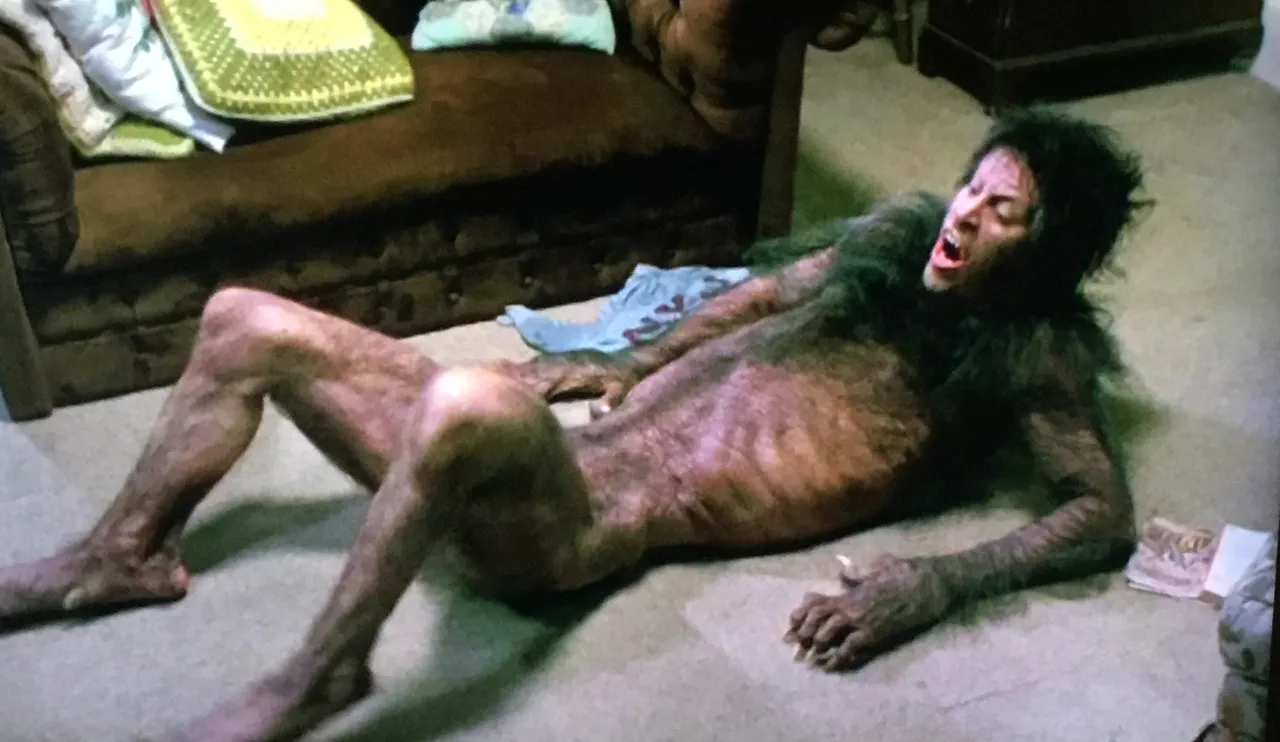
Now we are approaching what is, for me, the standout moment in this sequence. We see a side-on, close-up shot of the actor’s face and, before our very eyes, its features become grotesquely distorted, so that a human face stretches into the elongated snout of a wolf. This was accomplished by constructing a skull with extendable jaws, and this device was then covered with rubbery skin that would stretch when the jaw mechanism was extended.
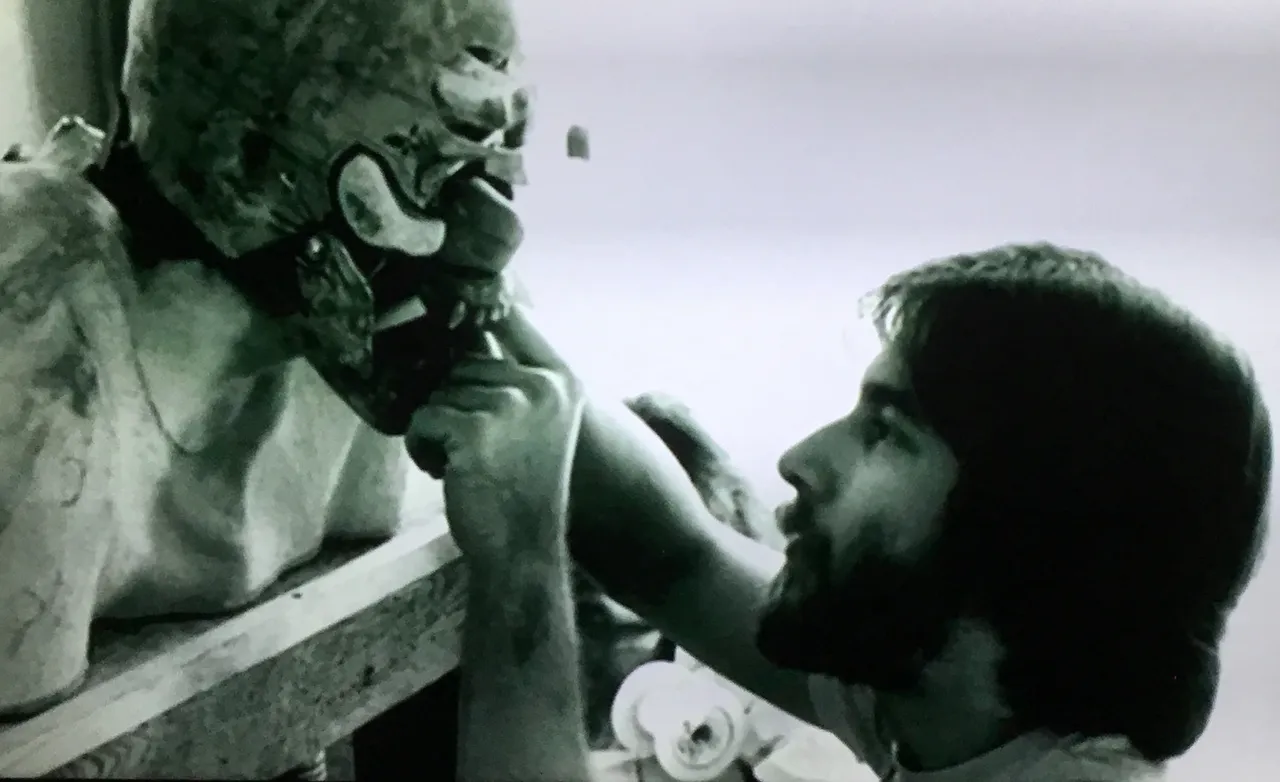
I think it is fair to say that this sequence set the standard for all werewolf films that followed. I also think most people would agree that it remains the best depiction of a man’s transformation into a werewolf that has ever been captured on film. Today, visual effects artists have access to technology that can enable them to accomplish things that were quite beyond the capabilities of 80s film-makers. Nevertheless, despite all the modern computer-generated effects, movies like the Underworld series have never surpassed ‘American’s’ transformation sequence, at least not in my book.
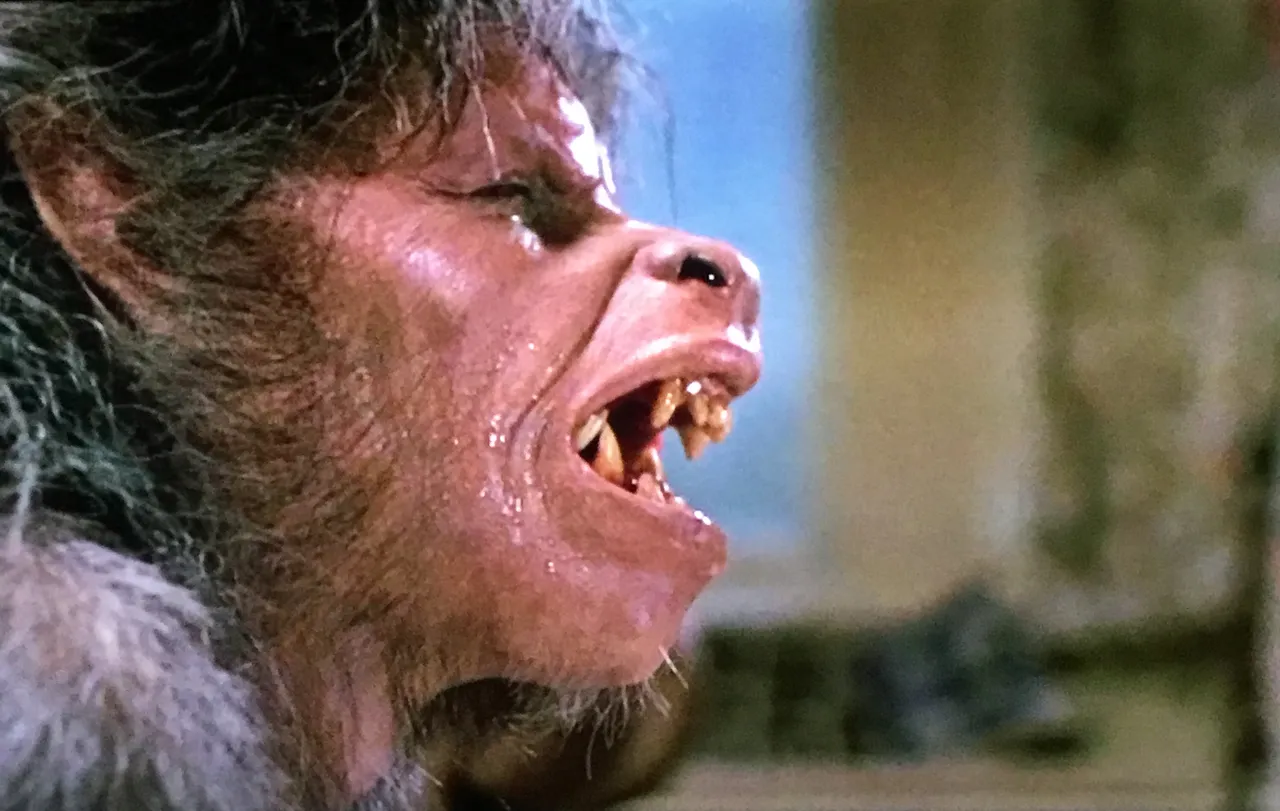
Of course, a lot of the credit for that has to go to the great work of Rick Baker and his effects team, but a mention must also go to the actor, David Naughton, who does such a terrific job of portraying the sheer horror his character feels, as his body is pushed and pulled in grotesque and painful ways, and his human nature is overtaken by the behaviour of a supernatural beast.
In fact, the whole movie is good. Funny and scary at the same time, which is no mean feat to achieve. Check it out if you haven’t already.
Thanks to Universal for the images.